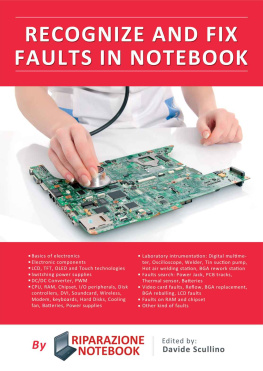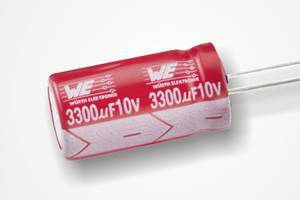HOW TO USE A DIGITAL MULTIMETER
The Quick Guide to Learn How To Use A Digital Multimeter To Measure Voltage, Current And More Correctly, Diagnose And Fix Anything Electronic
ROBERT SEAMANS
Copyright
All rights reserved. No section of this book or any part therein may be distributed, reproduced or stored in a retrieval system in whatsoever manner or by any means, including photocopying, recording or any other forms of transmission without the express written consent of the publisher, except as permitted under section 107 or 108 of the 1976 United States Copyright Act.
Copyright 2020 Robert Seamans
TABLE OF CONTENTS
INTRODUCTION
If a device suddenly stops working at home or at work, it is more than annoying. It is often also completely unclear whether the fault is with the device or just with the power supply.
How good when you have a multifunctional measuring device at hand and can get to the bottom of the cause of the error in no time. But how is a multimeter properly operated? How are the test leads connected correctly? What do I have to pay attention to when measuring? We explain these questions in this guide and show what is important when measuring with the multimeter.
CHAPTER 1
What is a Multimeter?
The term meter is not just a measure of length. The most diverse measuring devices are also often referred to as meters .
To make a distinction, the measured variable is simply given at the front. Designations such as tachometer, thermometer, barometer or hygrometer have become established in our daily usage.
Similarly, there are voltmeters for voltage measurement in electronics, ammeters for current measurement or ohmmeters for resistance measurement. If a measuring device covers several functions at the same time, it is called a multimeter.
This analog built-in voltmeter only shows voltages.
Table-top multimeters are available for stationary use in workshops and hand-held multimeters are suitable for mobile use.
An Analog Multimeter or Digital?
The first multimeters were analog multimeters and had a pointer instrument to display the measured values.
However, this often led to reading errors. Either you read the value on the wrong scale or looked sideways at the instrument.
In order to avoid at least lateral viewing angle errors (parallax errors), some manufacturers have integrated reflective surfaces into the scales. If the pointer and the mirror image are aligned, you look straight at the scale and can read off the correct value.
With the development of digital technology, multimeters also became digital. Instead of a deflecting pointer, the measured value is now digitally displayed in large digits.
This means that the mechanically susceptible pointer instrument has finally had its day. The new devices are known as digital multimeters or DMMs.
At the end of the 1970s, the dream of every TV technician apprentice.
CHAPTER 2
What Can Be Measured with a Multimeter?
A wide variety of electrical parameters can be recorded with an inexpensive digital multimeter. But before you start measuring, you have to be clear about which measured value is to be recorded. Since beginners in measurement technology, in particular, tend to confuse current and voltage, we will explain the most important measured variables in more detail.
Voltage
The electrical voltage is, as it were, the drive for the electrical current. Since the electric current is an exchange of charge carriers (electrons), there is an excess of electrons (-) at one pole and a shortage of electrons (+) at the other pole. Depending how greater the difference is between excess or deficiency, the higher is the voltage. In simple terms, one can say that the voltage describes the force or strength of a voltage source.
The symbol for the voltage is U and the unit is 1 volt (V) .
DC Voltage
Batteries are typical DC voltage sources
If the level of the voltage does not change over a certain period of time, it is referred to as direct voltage V / DC (DC = Direct Current). Typical voltage sources with direct voltage are batteries, accumulators or power packs.
AC Voltage
Sockets emit an alternating voltage.
If the level of the voltage changes periodically and the mean values of the positive and negative components are the same, in that case, we speak of alternating voltage V/AC (AC = Alternating Current). Typical voltage sources for AC voltage are mains sockets or mains transformers.
Electric Current
When the two poles of a voltage source are conductively connected to one another via a consumer, an electric current flows. This means that on the side of the voltage source with the excess of electrons, the electrons are fed into the circuit. On the side of the voltage source with the electron shortage, electrons are withdrawn from the circuit.
In principle, the voltage source tries to compensate for the excess/deficiency situation via the circuit. The current level depends on the level of the voltage at the voltage source and the consumer's resistance.
The symbol for the current is I and the unit is 1 ampere (A) .
Direct Current
Simple circuit with a battery as a voltage source.
When the voltage source supplies a direct voltage, the current flows continuously in one direction. In this case, it is direct current (A/DC).
Alternating Current
Simple circuit with a socket as a voltage source.
With an AC voltage source, the current changes direction, just like the voltage. In this case, one speaks of alternating current (A / AC).
Depending on the equipment, digital multimeters offer additional measurement options.
Resistance
Even in the lowest price category, many digital multimeters offer the possibility of measuring continuity and resistance.
On the one hand, lines, switches or fuses can be checked without any problems. On the other hand, the exact values of resistances can also be measured.
The symbol for the resistance is R and the unit is 1 Ohm () .
Capacitance
The capacitance measurement of capacitors works in a similar way to that of resistors. But instead of the DC voltage for resistance measurement, the digital multimeter now generates an AC voltage. As a result, the capacitor to be tested is constantly charged and discharged with alternating polarity. Due to the charging current flowing in the process, the measuring device can determine and display the capacitance of the capacitor. The symbol for the electrical capacitance is C and the unit is 1 farad (F) .















